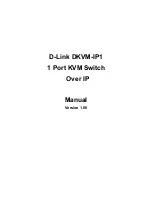
Chapter 5
| VLAN Configuration
IEEE 802.1Q Tunneling
– 169 –
2.
If the ether-type of an incoming packet (single or double tagged) is not equal
to the TPID of the uplink port, the VLAN tag is determined to be a Customer
VLAN (CVLAN) tag. The uplink port’s PVID VLAN native tag is added to the
packet. This outer tag is used for learning and switching packets within the
service provider’s network. The TPID must be configured on a per port basis,
and the verification cannot be disabled.
3.
If the ether-type of an incoming packet (single or double tagged) is equal to the
TPID of the uplink port, no new VLAN tag is added. If the uplink port is not the
member of the outer VLAN of the incoming packets, the packet will be dropped
when ingress filtering is enabled. If ingress filtering is not enabled, the packet
will still be forwarded. If the VLAN is not listed in the VLAN table, the packet will
be dropped.
4.
After successful source and destination lookups, the packet is double tagged.
The switch uses the TPID of 0x8100 to indicate that an incoming packet is
double-tagged. If the outer tag of an incoming double-tagged packet is equal
to the port TPID and the inner tag is 0x8100, it is treated as a double-tagged
packet. If a single-tagged packet has 0x8100 as its TPID, and port TPID is not
0x8100, a new VLAN tag is added and it is also treated as double-tagged
packet.
5.
If the destination address lookup fails, the packet is sent to all member ports of
the outer tag's VLAN.
6.
After packet classification, the packet is written to memory for processing as a
single-tagged or double-tagged packet.
7.
The switch sends the packet to the proper egress port.
8.
If the egress port is an untagged member of the SPVLAN, the outer tag will be
stripped. If it is a tagged member, the outgoing packet will have two tags.
Configuration Limitations for QinQ
◆
The native VLAN of uplink ports should not be used as the SPVLAN. If the
SPVLAN is the uplink port's native VLAN, the uplink port must be an untagged
member of the SPVLAN. Then the outer SPVLAN tag will be stripped when the
packets are sent out. Another reason is that it causes non-customer packets to
be forwarded to the SPVLAN.
◆
Static trunk port groups are compatible with QinQ tunnel ports as long as the
QinQ configuration is consistent within a trunk port group.
◆
The native VLAN (VLAN 1) is not normally added to transmitted frames. Avoid
using VLAN 1 as an SPVLAN tag for customer traffic to reduce the risk of
misconfiguration. Instead, use VLAN 1 as a management VLAN instead of a data
VLAN in the service provider network.
Содержание GTL-2881
Страница 30: ...Figures 30 Figure 450 Showing RIP Peer Information 669 Figure 451 Resetting RIP Statistics 670 ...
Страница 34: ...Section I Getting Started 34 ...
Страница 48: ...Section II Web Configuration 48 Unicast Routing on page 651 ...
Страница 151: ...Chapter 4 Interface Configuration VLAN Trunking 151 Figure 69 Configuring VLAN Trunking ...
Страница 152: ...Chapter 4 Interface Configuration VLAN Trunking 152 ...
Страница 229: ...Chapter 8 Congestion Control Automatic Traffic Control 229 Figure 135 Configuring ATC Interface Attributes ...
Страница 230: ...Chapter 8 Congestion Control Automatic Traffic Control 230 ...
Страница 596: ...Chapter 14 Multicast Filtering Multicast VLAN Registration for IPv6 596 ...
Страница 620: ...Chapter 15 IP Configuration Setting the Switch s IP Address IP Version 6 620 ...
Страница 670: ...Chapter 18 Unicast Routing Configuring the Routing Information Protocol 670 Figure 451 Resetting RIP Statistics ...
Страница 672: ...Section III Appendices 672 ...
Страница 678: ...Appendix A Software Specifications Management Information Bases 678 ...
Страница 688: ...Appendix C License Statement GPL Code Statement Notification of Compliance 688 ...
Страница 696: ...Glossary 696 ...
Страница 706: ...GTL 2881 GTL 2882 E112016 ST R01 ...
















































